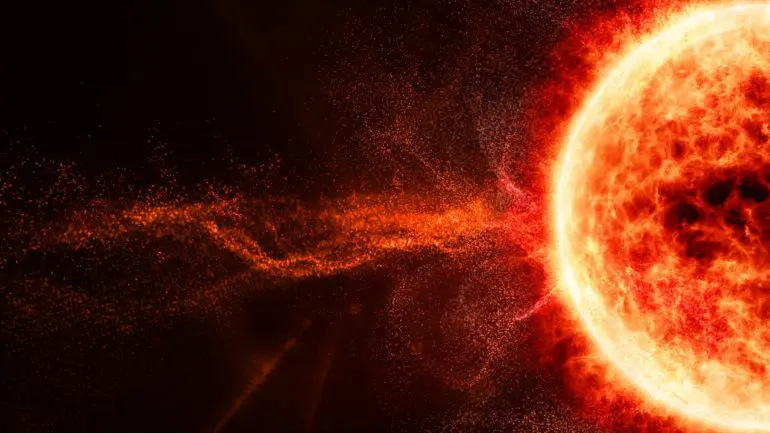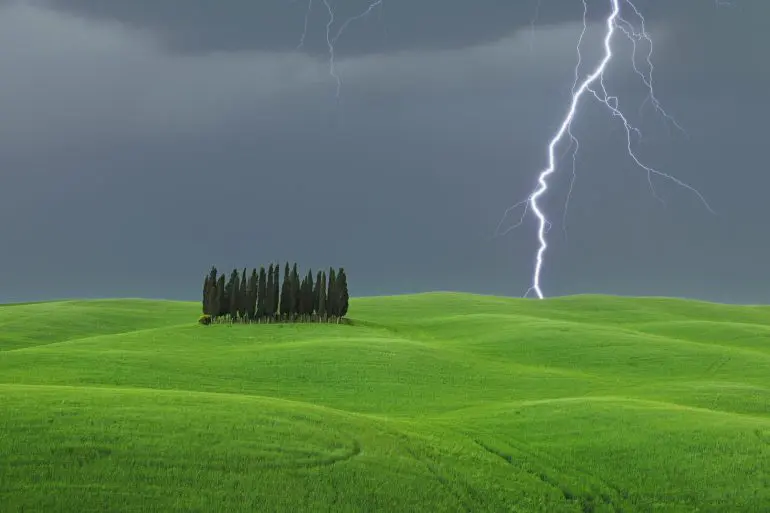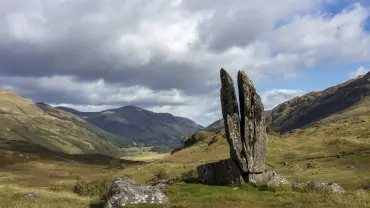The skyquake, a perplexing atmospheric phenomenon characterised by loud, unexplained sounds that seem to originate from the sky, has captured curiosity and concern for centuries. These mysterious noises, akin to an atmospheric boom, distant thunder, or an explosion, have been reported all over the world, leaving residents and scientists alike baffled by their sudden occurrence and elusive origins.
The phenomenon, often described as coming from nowhere and without a visible source, encompasses a range of sounds, from deep, resonant booms to sharp, cannon-like blasts, even the roar of wild animals or the sound of musical instruments. Documented reports of skyquakes date back to at least the early nineteenth century, though their true nature and cause remain the subject of speculation and debate.
What’s causing this booming noise in the sky? Is there a simple explanation, or are there more mysterious or otherworldly forces at play? Here’s the story of the sky quake.
The Skyquake Enigma

Lake Erie, USA/Canada (Credit: Ali Majdfar via Getty Images)
The bizarre atmospheric boom noises generally known as ‘skyquakes’ have occurred all over the world, from Bangladesh to Belgium, Northern Ireland to South Australia, and Germany to Japan. This widespread occurrence has fuelled a variety of explanations, ranging from atmospheric conditions to seismic activity and even top secret military operations, yet no single theory has been agreed upon.
There are accounts of unexplained sounds from the sky that date back to ancient times. Historical texts and legends from various cultures have described phenomena that could be interpreted as skyquakes, including loud, unexplained noises from the heavens.
One of the earliest documented reports was from an island in the Adriatic Sea in 1824, while in 1896, a skyquake was heard in the western New York town of Franklinville, around fifty miles from the shores of Lake Erie.
A Sky Quake By Any Other Name

River in Barisal, Bangladesh (Credit: Future Publishing via Getty Images)
The French call them canons de mer, or ‘sea guns.’ In Italy they’re known as brontidi, or ‘like thunder.’ The Bangladeshis call them ‘Barisal Guns’, after the loud unexplained noises that emanated from the East Bengal region of Barisal in the nineteenth century, and in Japan, these unexplained atmospheric boom sounds are called uminari, or ‘cries from the sea.’
The Indonesian word for a sky quake is dentuman, which literally translates as ‘clatter’, and in the Low Countries, the phenomenon is known as mistpoeffers, or ‘fog dissipators.’ However, perhaps the best known name for these spooky sounds, is the Seneca Guns.
The Finger Lake Phenomenon

Seneca Lake, New York, USA (Credit: John Greim via Getty Images)
Seneca Lake is the largest of the Finger Lakes, a group of eleven, narrow north-south lakes in New York’s west-central region, around 60 miles southeast of the city of Rochester. The lake is 38 miles long, and roughly three miles across at its widest. At 618 feet, it’s also one of the deepest lakes in the USA and is known for having one of the world’s largest populations of lake trout. But it’s not famous for being full of fish. It’s famous for the Seneca Guns.
This mysterious moniker originates from Seneca Lake where these bizarre sounds have historically been reported. However, the phenomenon is not limited to this area. They have been heard along the coasts of the Great Lakes and certain coastal areas of the US, particularly along the East Coast from New Jersey to North Carolina.
The Seneca Guns, or Lake Guns, named after James Fenimore Cooper’s 1850 short story The Lake Gun, are characterised by loud, cannon-like booms that seem to come from the sky, with no visible cause. Reports often describe the sounds as resembling distant thunder, fireworks, or explosions, even when the sky is clear and no human activities that could produce such sounds are evident. Despite their startling nature, these sounds usually do not accompany any detectable seismic activity, making their source even more mysterious.
Cooper wrote, ‘It is a sound resembling the explosion of a heavy piece of artillery, that can be accounted for by none of the known laws of nature. The report is deep, hollow, distant and imposing. The lake seems to be speaking to the surrounding hills, which send back the echoes of its voice in accurate reply.’
Between 2013 and 2015, seismologists from the University of North Carolina used a network of 400 atmospheric sensors to measure local seismic activity, and compared the seismo-acoustic data with local news reports of skyquakes.
Some unusual activity was reported around the appropriately-named Cape Fear in Carolina Beach, but they found no evidence that earthquakes were the cause of the booming noise in the sky. In fact they found no evidence of anything at all.
So what is the phenomenon known as the skyquake?
Skyquakes: Boom or Bust?

F-18 Super Hornet sonic boom (Credit: yenwen via Getty Images)
The origin of the atmospheric boom known as the sky quake has been the subject of speculation and investigation for years, leading to a variety of theories that range from the scientifically plausible to the speculative and otherworldly.
Sonic Booms
One of the most commonly accepted explanations involves sonic booms produced by aircraft exceeding the speed of sound. These booms can travel long distances and can be heard far from their origin, often without the aircraft itself being visible to those on the ground. While scientifically plausible, skyquakes were reportedly heard centuries before the development of supersonic flight.
Seismic Activity
Minor earthquakes or underground seismic events can produce sounds that are heard above ground. These sounds can sometimes precede or follow actual tremors and, in areas not typically associated with frequent seismic activity, they might be particularly surprising.
Atmospheric Conditions
Certain atmospheric conditions can amplify sound waves from distant storms, industrial activities, or other sources, making them audible over long distances. Temperature inversions, where a layer of warmer air sits over a layer of cooler air, can trap and channel sound waves in unexpected ways.
Extreme Weather
Events such as sudden releases of atmospheric pressure or explosive lightning strikes (thunderbolts) within storm systems can generate loud sounds that might be mistaken for skyquakes.
Methane Explosion
Release and ignition of methane gas from underwater or underground sources can produce loud, unexplained sounds. Methane can accumulate from decaying organic matter in places like swamps or underwater deposits.
Meteors
The entry of meteors into the Earth’s atmosphere can create sonic booms or explosive sounds as they disintegrate, often accompanied by visible streaks in the sky.
Skyquake Speculation

Coronal mass ejection form the sun (Credit: LV4260 via Getty Images)
Like all unexplained acoustic phenomena – the Taos Hum in New Mexico being a perfect example – there are a range of theories that push the boundaries of accepted understanding to their outer limits.
Tectonic Strain
Skyquakes could be caused by sounds generated by strain within the Earth’s crust, potentially without accompanying detectable seismic activity.
Electromagnetic Sounds
Theoretical electromagnetic events in the atmosphere that might produce sounds or interact with the Earth’s surface are another speculative potential cause.
Supersonic Aircraft or Military Testing
Secretive or experimental military activities, including aircraft tests, could go some way to explain these phenomena.
Astrophysical Phenomena
This includes speculative theories about phenomena like micro black holes or dark matter interactions.
Coronal Mass Ejections
CMEs are massive bursts of solar wind and magnetic fields rising above the solar corona or being released into space. They can potentially interact with the Earth’s magnetosphere, inducing disturbances that some speculate could lead to audible effects. While theoretically possible, this remains highly speculative.
Otherworldly or Extraterrestrial Activity
Theories about extraterrestrial spacecraft or phenomena are popular in speculative discussions. While entertaining to some, they lack empirical support and hard evidence.
Skyquakes: Sounds of the Unknown

Is thunder & lightning the cause of skyquakes? (Credit: Martin Ruegner via Getty Images)
The enigmatic phenomenon of the sky quake continues to intrigue and puzzle both the scientific community that studies them and the public that hears them.
With a myriad of possible explanations ranging from natural atmospheric and geological events to more speculative and out-of-this-world theories, skyquakes continue to evade definitive explanation. As technology advances and research deepens, the hope for unravelling these auditory mysteries grows, yet their allure remains undiminished.












